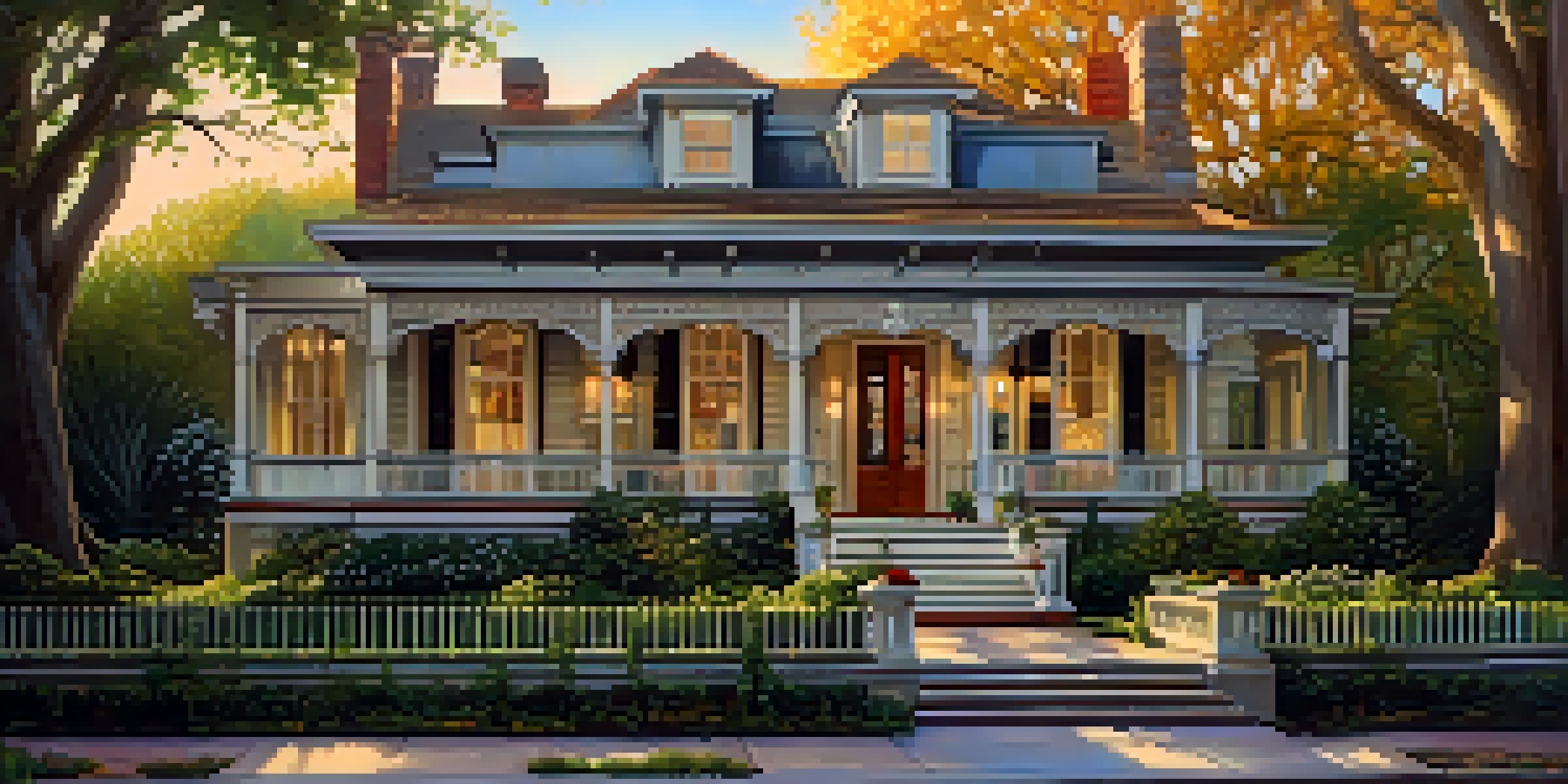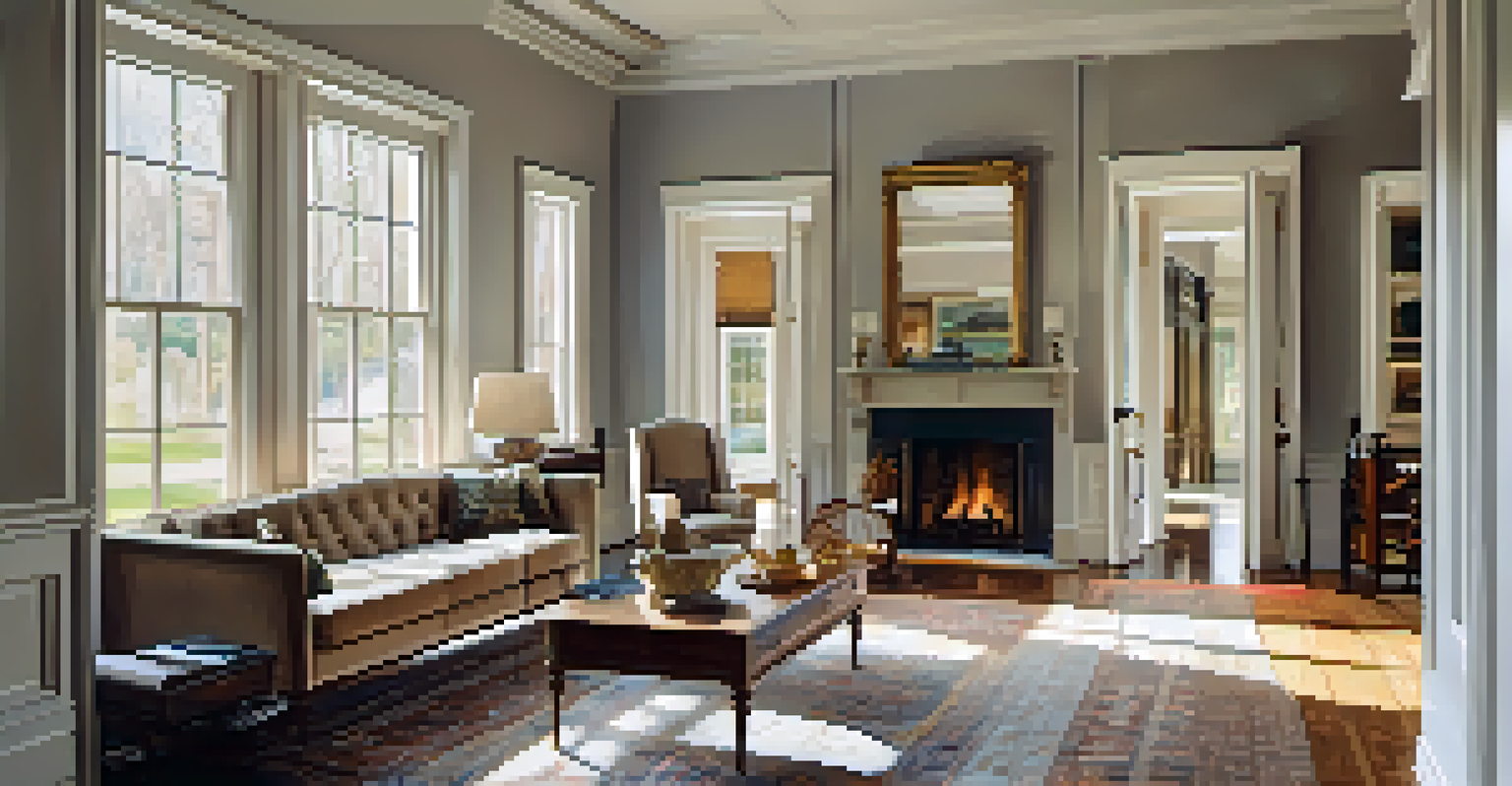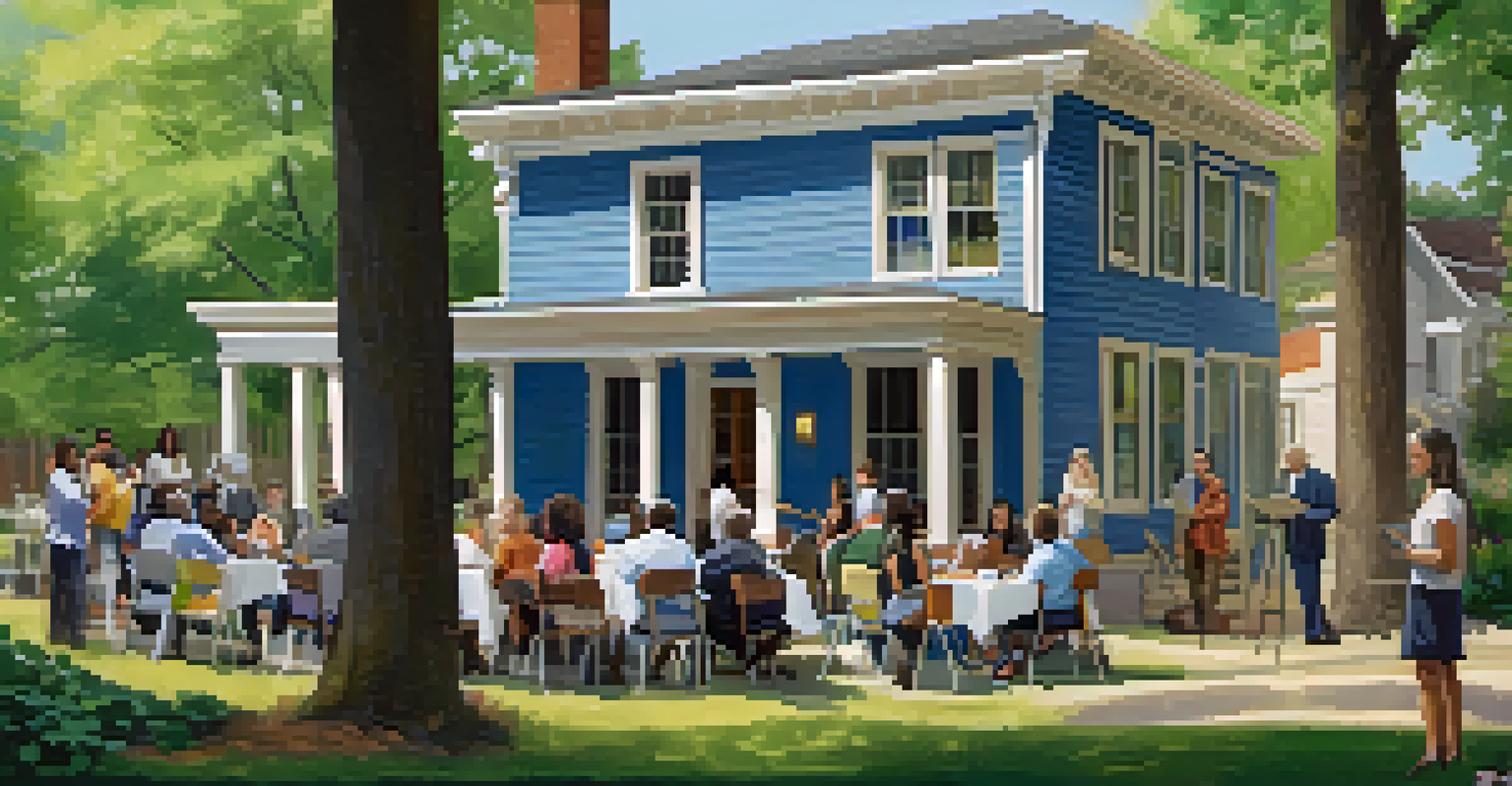The Importance of Accessibility in Historic Home Renovations

Understanding Accessibility in Historic Homes
Accessibility refers to how easily people can access and use spaces, particularly those with disabilities. In historic homes, this concept can be challenging due to their unique architectural features. However, integrating accessibility doesn’t mean compromising the home's historical integrity—it means enhancing it for all visitors.
Accessibility is not a privilege, it is a right.
For example, adding ramps or modifying doorways can significantly improve access while maintaining the home's charm. It's essential to recognize that accessibility is not just about physical barriers; it's also about ensuring everyone feels welcome. By considering accessibility in renovations, we honor the past while embracing inclusivity.
Many historic homes were built long before modern accessibility standards existed. As a result, addressing these issues can help preserve the home’s legacy while allowing future generations to enjoy them. Accessibility isn’t merely an add-on; it’s a fundamental aspect of responsible renovation.
Legal Framework Governing Accessibility
Various laws and regulations govern accessibility, including the Americans with Disabilities Act (ADA). These guidelines provide a framework for what constitutes an accessible space, which can guide renovations of historic homes. Understanding these legal requirements is crucial for homeowners and contractors alike.

For instance, the ADA specifies certain standards for entrances, restrooms, and common areas. While historic homes may have exemptions, many jurisdictions encourage or require compliance to ensure public access. Knowing the legal landscape helps avoid potential pitfalls during renovation projects.
Integrating Accessibility in History
Enhancing accessibility in historic homes preserves their charm while making them welcoming for all visitors.
Moreover, non-compliance can lead to legal repercussions and limit the usability of the home. By adhering to accessibility laws, homeowners not only protect themselves but also ensure that their properties can be enjoyed by a wider audience, fostering a sense of community.
Benefits of Accessible Historic Homes
Making historic homes accessible opens doors—literally and figuratively. It allows individuals with disabilities to experience the beauty and significance of these homes, enhancing their cultural value. This inclusivity can lead to increased interest and tourism, benefiting the local economy.
The past is a place of reference, not a place of residence.
Additionally, accessible homes can attract a broader range of buyers or renters. Families with young children or older adults may prioritize accessibility features, making these homes more marketable. Investing in accessibility can be seen as both a social responsibility and a smart financial move.
Beyond the economic advantages, accessible designs often improve functionality for everyone. Features like wider doorways and open floor plans not only support those with disabilities but also enhance the comfort and usability for all visitors.
Common Accessibility Challenges in Renovations
Renovating historic homes to be accessible comes with unique challenges. Balancing the need for modern amenities with the desire to preserve historical features can be tricky. For example, maintaining original staircases can conflict with the need for ramps or lifts.
Another challenge is navigating local regulations and guidelines, which may vary significantly. Some homeowners may find it difficult to secure necessary permits for modifications. Understanding the requirements and seeking guidance from local preservation societies can help navigate these hurdles.
Legal Guidelines Are Crucial
Understanding accessibility laws like the ADA helps homeowners navigate renovations while avoiding legal pitfalls.
Lastly, there's often a misconception that accessibility features are unsightly. However, with thoughtful design and planning, it’s possible to create solutions that blend seamlessly with the home's historic character. Creative thinking can ensure that accessibility enhancements look as good as they function.
Designing for Accessibility without Sacrificing History
One of the greatest joys of renovating a historic home is the opportunity to merge old with new. Thoughtful design can incorporate modern accessibility features without detracting from the home’s historical aesthetics. For instance, a beautifully crafted ramp can be designed to match the original architecture.
Using materials that complement the home’s existing elements can enhance both accessibility and beauty. For example, a wooden ramp that matches the original flooring can create a cohesive look. Collaborating with skilled architects and designers who specialize in historic preservation can lead to innovative solutions.
Moreover, integrating technology can improve accessibility while respecting the home’s character. Smart home devices that assist with lighting and temperature control can be installed discreetly, enhancing convenience for all users. The goal is to create a harmonious balance between functionality and historical integrity.
Community Engagement in Renovation Projects
Engaging the community in renovation projects can be a powerful way to promote accessibility in historic homes. Involving local organizations and advocates can provide valuable insights and support. Community input ensures that the renovations meet the needs of all potential users, fostering a sense of ownership.
Hosting workshops or informational sessions can raise awareness about the importance of accessibility. These events can serve as platforms for sharing ideas and gathering feedback from those who may be impacted by the renovations. This collaborative approach can lead to more informed and inclusive design decisions.
Community Involvement Boosts Projects
Engaging the community in renovation efforts fosters inclusivity and ensures that designs meet the needs of all users.
Additionally, showcasing successful renovations can inspire other homeowners. By highlighting projects that prioritize accessibility, communities can encourage a culture of inclusivity and preservation. After all, a historic home is not just a structure; it’s a shared space that reflects the collective history and identity of the community.
Future Trends in Accessible Historic Renovations
As society moves towards greater inclusivity, the trend of making historic homes accessible is likely to grow. New technologies and design philosophies are emerging that prioritize accessibility alongside preservation. This shift is not only beneficial for individuals with disabilities but also enhances the overall experience for everyone.
For example, advancements in materials can provide durable, aesthetically pleasing solutions for accessibility challenges. Innovations like lightweight ramps and stylish grab bars can maintain the beauty of historic homes while providing necessary support. The future of renovation will focus on blending functionality with historical significance.

Moreover, as more homeowners recognize the value of accessibility, there may be an increase in funding and resources dedicated to such projects. Grants and incentives for accessible renovations can encourage more homeowners to take action. The future is bright for creating spaces that honor history while welcoming all.